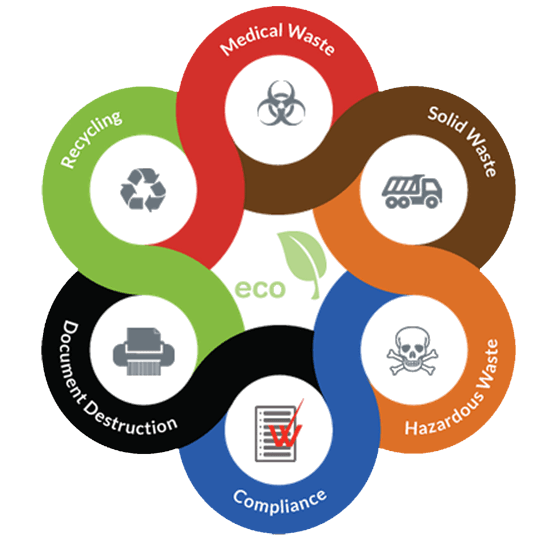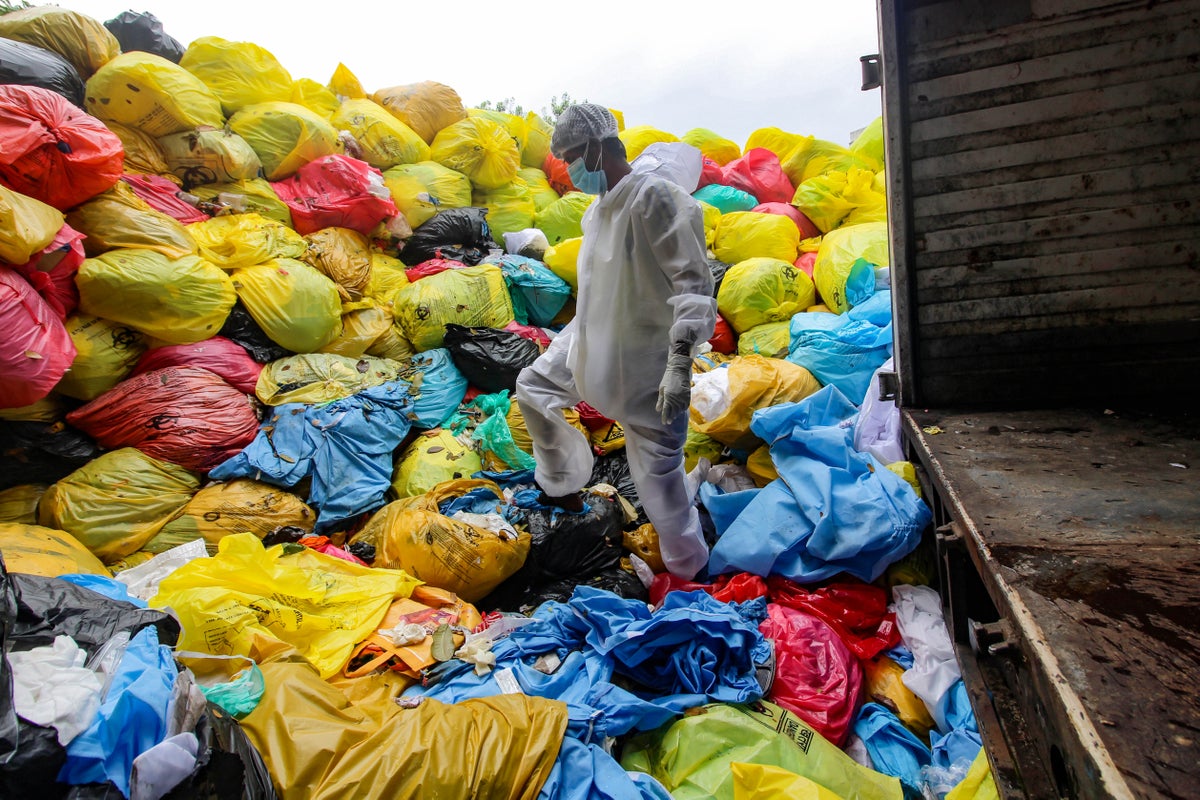Reliable Methods of Medical Garbage Disposal
Efficient techniques of clinical waste disposal are crucial in keeping public health and wellness and ecological security. Medical waste, including sharps, pathological waste, and pharmaceutical waste, need to be handled and thrown away effectively to avoid the spread of infections and protect the setting. This requires adherence to stringent policies and the implementation of specialist waste management methods.
Correct partition of medical waste, safe and safe storage, reliable therapy and disinfection techniques, and environmentally-friendly disposal choices are key elements of an effective clinical waste disposal system. Specialist waste management services play a vital function in making sure compliance with regulations and minimizing the risks related to inappropriate disposal. By utilizing these methods, health care facilities can contribute to a more secure and cleaner environment while securing the health of the community.
Appropriate Partition of Medical Waste
Correct partition of medical waste is important for ensuring the secure and reliable disposal of these possibly hazardous materials. Medical waste describes any type of waste produced throughout health care tasks, such as medical facilities, facilities, laboratories, and research facilities. It includes a broad variety of materials, such as used needles, syringes, contaminated dressings, ran out or unused medications, and organic materials.
By segregating medical waste, medical care centers can decrease the risk of infections, injuries, and ecological contamination. The procedure entails categorizing waste into various kinds, such as sharps, contagious waste, pharmaceutical waste, and non-hazardous waste. Each type calls for specific handling, product packaging, and disposal techniques to avoid direct exposure to health care workers, waste monitoring personnel, and the basic public.
To make certain proper segregation, medical care facilities ought to develop clear guidelines and offer adequate training to team member. This includes educating staff members on the various waste classifications, appropriate product packaging techniques, and making use of proper containers - WasteX Medical Waste Disposal. Additionally, clear signs and color-coding systems can be executed to facilitate the identification and segregation of different waste kinds
Safe and Secure Storage Space of Medical Waste
Safe and protected storage space of clinical waste is vital for preserving the integrity and containment of potentially dangerous materials. Proper storage not only safeguards health care employees and the public from direct exposure to hazardous compounds but additionally protects against ecological contamination.
To ensure risk-free storage, medical facilities ought to stick to certain standards. Waste must be stored in puncture-resistant and leak-proof containers that are identified properly - medical waste removal service.
Proper segregation of medical waste is likewise vital for safe storage space. Various sorts of waste, such as sharps, infectious materials, and pharmaceutical waste, should be separated to stop cross-contamination. This partition can be accomplished with using color-coded containers or bins.
Routine surveillance and inspection of the storage area are important to determine any prospective threats or breaches. This consists of checking for indications of damage or wear and tear in the containers, ensuring appropriate air flow, and keeping track of temperature and moisture levels.
Reliable Therapy and Sanitation Techniques

One commonly used treatment method is autoclaving, which involves subjecting the waste to high-pressure heavy steam at temperatures above 121 degrees Celsius. This procedure efficiently kills microorganisms and ruins transmittable agents, making the waste risk-free for additional disposal. Another approach is incineration, which entails melting the waste at high temperature levels. Incineration not just gets rid of microbes but likewise minimizes the waste quantity through combustion.
Chemical disinfection is one more efficient method for treating clinical waste. This method includes utilizing anti-bacterials such as chlorine substances, phenolic substances, or hydrogen peroxide to kill or suspend microorganisms (WasteX Medical Waste Disposal). Chemical sanitation is typically utilized for liquid waste, such as laboratory samples or physical liquids
In the last few years, different treatment techniques such as microwave disinfection, irradiation, and organic treatment have actually likewise obtained attention. These methods offer advantages such as lowered environmental impact and energy intake compared to conventional approaches.
Environmentally-friendly Disposal Options
In the realm of medical waste disposal, taking into consideration environmentally-friendly options is vital. Healthcare facilities create a considerable amount of waste, including infectious materials, pharmaceuticals, and chemicals, which can present severe risks to human health and the atmosphere if not managed properly. Luckily, there are numerous environmentally-friendly disposal options offered that can help reduce these risks.
One such choice is reusing. Recycling clinical waste includes segregating and processing certain products for reuse or repurposing. Plastics, glass, and steel containers can be reused, reducing the need for brand-new materials and reducing the quantity of waste sent out to landfills. Additionally, some health care centers have actually executed reusing programs for particular medical gadgets or equipment, further decreasing waste generation.
This approach involves converting clinical waste right into power with processes like incineration or anaerobic food digestion. Anaerobic food digestion, on the other hand, breaks down natural waste in the lack of oxygen, generating biogas that can be used for power or warmth generation.

Advantages of Professional Waste Monitoring Solutions
One significant advantage of expert waste monitoring services is the enhanced effectiveness in getting rid of and handling of medical waste. By using specialist waste monitoring solutions, healthcare facilities can ensure that all medical waste is dealt with and disposed of appropriately, decreasing the threat of contamination and the spread of conditions.
Professional waste monitoring solutions utilize knowledgeable and qualified employees who are well-informed regarding the policies and guidelines for medical garbage disposal. They have accessibility to customized tools and devices that allow them to manage different types of medical waste securely and effectively. These services also have well-established treatments and methods in area to make certain that waste is set apart, packaged, delivered, and disposed of in conformity with regional, state, and federal regulations.
Moreover, specialist waste administration services can offer healthcare facilities with extensive waste management remedies. They can use services such as waste collection, treatment, transportation, and disposal, customized to the certain demands and demands of the center. This gets rid of the concern of taking care of waste inside, permitting medical care staff to concentrate on supplying quality person care.
Verdict
In final thought, reliable approaches of clinical waste disposal involve proper partition, safe storage, therapy and disinfection, and environmentally-friendly disposal options. These techniques make sure the secure handling and monitoring of clinical waste, protecting against the spread of infections and safeguarding the atmosphere.
Clinical waste, consisting of sharps, pathological waste, and pharmaceutical waste, have to be handled and disposed of properly to prevent the spread of infections and safeguard the environment.Proper segregation of medical waste, safe and safe storage, efficient treatment and disinfection methods, and environmentally-friendly disposal options are key elements of an efficient medical waste disposal system. The procedure includes classifying waste right into various types, such as sharps, contagious waste, pharmaceutical waste, and non-hazardous waste. By using WasteX Medical Waste Disposal expert waste monitoring solutions, medical care facilities can guarantee that all medical waste is handled and disposed of properly, lessening the threat of contamination and the spread of diseases.
Professional waste management solutions utilize qualified and experienced personnel that are educated regarding the policies and standards for clinical waste disposal.